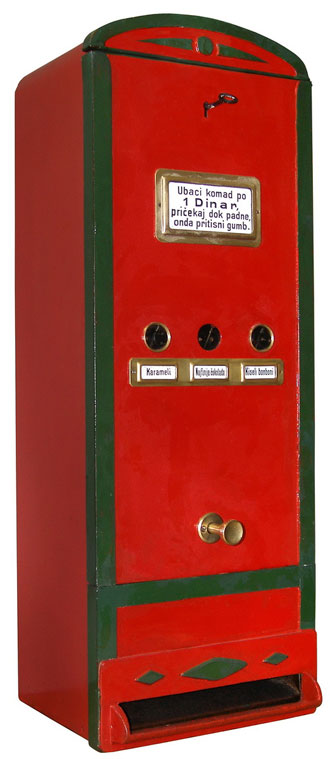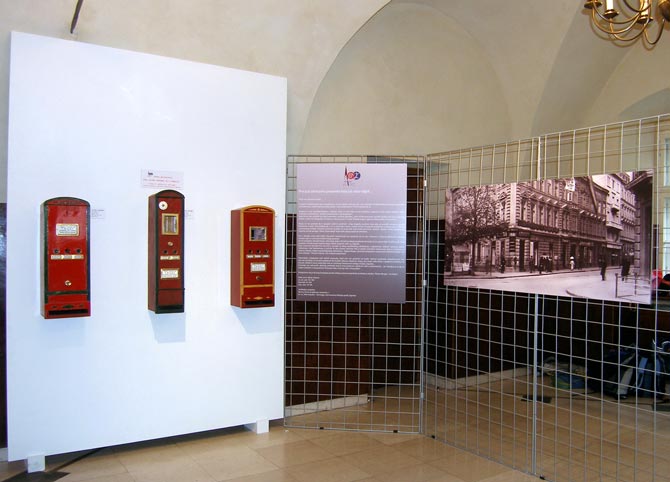Vending machines
An exhibition within the “Object of the Month” campaign on the occasion of the centennial of Zagreb City Museum
Exhibition concept: Marina Perica Krapljanov

The items that we are presenting to you in October as part of our “Exhibition Attraction of the Month” scheme are vending machines from the 1930s. Although it is quite impossible to determine the origin or place of manufacture of these objects, there is no doubt at all that they were to be found on the streets of Zagreb. One such machine was placed at the corner of today's Masaryk Street and our (great)grandmothers and grandfathers as children (and the adults) were able ro relish the “finest chocolates”, “acid drops” and “toffees” by inserting their coins in the slots.
Vending machines have a long history. The Greek mathematician Hero of Alexandria, author of the celebrated Pneumatics, was the initiator of this sales technique that does away with the need for salesperson or any physical person; in 215 BC he invented a machine from which a certain amount of “holy water” from the temples of Egypt would be measured out when a coin was inserted. Irrespective of this very long history, vending machines came into their own during the time of vigorous industrialisation during the 19th century.
The first machine in full commercial operation was created in London in the 1880s, and was used for the sale of picture postcards. Richard Carlisle, English publisher and bookshop owner also invented a machine for the sale of books. Around 1888, the Thomas Adams Gum Company started disposing their machines to deliver tutti-frutti chewing gum around the subway stations of New York. The year 1907 saw the invention of the best known and mostly widely distributed product sold in machines of this kind – chewing gum in the form of little balls of different colours.
Today's vending machines sell a great number of consumer goods: confectionery beverages, stamps, postcards, cigarettes and even an entire “plant” that delivers meals.
Zagreb City Museum purchased three street-located vending machines from Mr Nikola Zagrović in 2001. For decades, these machines had not been in use, the mechanisms did not work, the housings were in poor condition, they had been improperly stored and were showing all the effects of time. These items, then, had to be restored, which was done in the preparation workshop of the museum. Stjepan Bogec, assistant preparator, carried out the operations need to put the mechanism back into working order, and the restoration of the housings and their cleaning were looked after by Tihomir Stančec, senior museum preparator – all so that you, the museum's visitors, could have the finest chocolate to hand.
It is our intention, dear friend of the museum, in exhibiting these items, to draw your attention to some of the apparently ordinary and everyday items and trifles that surround us. In their present state, they perhaps do not have the gravity and importance of the museum exhibit; yet, stored and looked after, with a suitable distance of time, they constitute the history of the quotidian, and their meaning will become of significance to future generations.
Marina Perica Krapljanov
Pictures from the exhibition


photo Miljenko Gregl, ZCM

